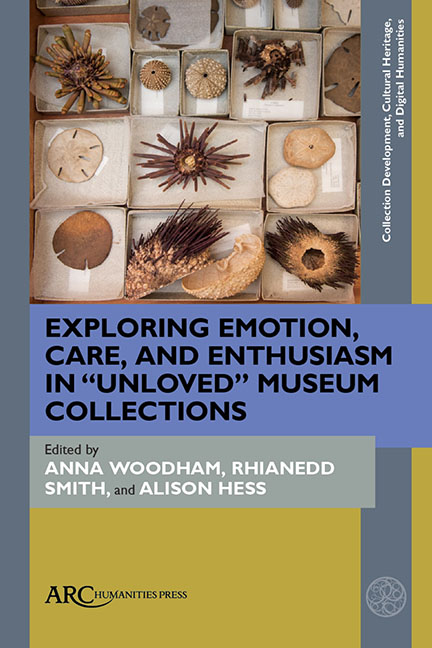Volume Conclusion: How to Put a Little Love in Your Stored Collection
Published online by Cambridge University Press: 20 November 2020
Summary
WHAT WE AIM to have achieved by bringing these diverse contributions together around the idea of “unloved” collections is to stimulate questions on the overlapping themes: collecting, emotion, care, and enthusiasm. We have been particularly interested in applying this in relation to institutional practices within museums and museum storerooms. Each of these themes has an established or emerging legacy of its own elsewhere, but they haven't necessarily been brought together and explored at the points of connection as we have started to do here. In order to tie together the various threads of discussion, we return briefly to the opening questions posed in the introduction to this volume to outline our concluding thoughts.
What Are Unloved Collections and Who Cares for Them?
The term “unloved” collections is a useful prompt for discussion; however, it is very hard to define and comprises within it many potential strands of enquiry and reasons for becoming “unloved.” As our interest is in the meeting point of practice and theory, we have not delved too deeply here into the theoretical investigation of value within material culture and museum/ heritage studies, although questions of value are implicit across the volume. In relation to the process of devaluing objects or museum storage areas, some of our authors have made suggestions as to why this occurs in relation to the cases presented, including shifts in taste and fashion, changing research cultures, changing notions of aesthetics, or certain policies which might marginalize specific objects and spaces. For example, the refocusing of the museum as an agent of social change may render repetitive research collections a “luxury.” They may become framed as a “burden,” inherited from historic collecting practices, and indicate the need for more thematic collecting that can respond quickly to changing collecting needs. This volume has interrogated what happens to objects that were collected under different traditions and how these can maintain a sense of value, although there is certainly more work to be done on understanding this subject.
What the discussions in the preceding chapters have highlighted is that these collections might not actually be “unloved” by the majority of people; they might simply require specialist skills or knowledge in order for their significance to be understood.
- Type
- Chapter
- Information
- Publisher: Amsterdam University PressPrint publication year: 2020



